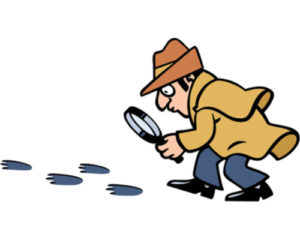 The State of Vermont is holding over $88 million in unclaimed funds!
The State of Vermont is holding over $88 million in unclaimed funds!
There are over 485,000 individual accounts that are owed money.
Funds are considered unclaimed if the institution holding them cannot find the person or entity that own them.
Examples of unclaimed funds include:
- Dormant Savings/Checking Accounts and Certificates of Deposit
- Safe Deposit Box Contents
- Uncashed Money Orders, Cashier’s or Travelers Checks
- Uncashed Payroll Checks
- Uncashed Stock and Mutual Funds Dividends
- Stock Certificates
- Unclaimed Security Deposits
- Utility Deposits
- Customer Deposits, Overpayments, Credit Balances, and Refunds
- Court Deposits
- Insurance Payments
- Probate Court Judgements
- Property Overlooked in the Probate of an Estate
- Paid Up Life Insurance Polices
- Uncashed Death Benefit Checks and Life Insurance Proceeds
Vermont Unclaimed Property laws require corporations, business associations, financial institutions, insurance companies and other such entities (referred to as holders) to report and deliver property annually to the State Treasure Office if there has been no customer activity on the account for a pre-defined number of years. All state citizens benefit from property that remains unclaimed as interest earned on these funds helps support public programs.
The law was enacted to prevent holders of unclaimed funds from keeping money not belonging to them in their coffers. The law gives the state an opportunity to locate citizens that are owed financial assets as well a providing a single repository for Vermont citizens to search for unclaimed property owed to them.
There is no fee for this service. It is the Treasurer’s goal to make every reasonable effort to locate the rightful owners of these unclaimed funds.
Click here to search for Vermont Unclaimed Funds
To start your search, click on the link above. If funds come up in your name check the address associated with them to determine if it is a current or former home or work address. Then review the name of the organization shown to have reported it to determine if you ever had a business association with it. For privacy reasons, social security numbers are omitted from the site. Once you have confirmed that the funds most likely belong to you, make sure you have the proper documentation to prove ownership including official documentation, documents showing the address with your name, etc..
There are several things you can do to prevent funds from being turned over to the state including:
- Maintaining accurate and current records of bank accounts, insurance policies, stock certificates, utility and rent deposits, and safe deposit box locations
- Pay all safe deposit box rental fees on time
- Remain in active contact with the holders of your funds by mail, email, telephone or in person
- Cash all checks received promptly after receipt including dividends, wages, refunds, and insurance settlements
If you find property that belongs to you, you must print a claim form. You must include the OID (owner number) that is listed with the property you are claiming. It is the number that is under the heading OID in the unclaimed property search function above.
If you are unable to print a claim form, you may request that a form be sent to you by clicking on the OID number of the property listed. An electronic form will appear on screen and allow you to enter your name and current mailing address. A form will then be mailed to you.
To claim property you must mail a claim form to:
Vermont Unclaimed Property Division
State Treasurer’s Office
109 State Street
Montpelier, Vermont 05609-6200
Express Claims
An express claim allows you to receive your money faster. It is only used when claiming property valued at $200 or less. To file an express claim:
1. You must be the original owner.
2. The amount must be $200 or less.
3. You must complete and return a claim form.
4. If you still live at the address listed on the web-site, sign the claim form in the presence of a notary and send it in. OR, If you prefer not to use a notary, include a copy of your current photo ID with the completed,signed claim form and mail both to the Unclaimed Property Division.
– OR –
If you no longer live at the address listed on the web-site, provide evidence you once lived at that address, a copy of your current photo ID and a signed claim form (no notary needed) and mail to the Unclaimed Property Division. OR If you prefer, sign the form in front of a notary(no ID needed), provide proof you once lived at that address and mail all to the Unclaimed Property Division.
- Examples of former address include, but are not limited to: copy of an old ID, utility bill, tax form, bank statement.
- If you no longer have any evidence, include a statement to that effect and indicate what years you resided at the address/addresses that are listed.
To claim property you must mail a claim form to:
Vermont Unclaimed Property Division
State Treasurer’s Office
109 State Street
Montpelier, Vermont 05609-6200
You Can Contact the Unclaimed Property Division
In Person
The Unclaimed Property Division of the Vermont State Treasurer Office is located on the fourth floor of The Pavilion Building, 109 State Street, in Montpelier. It is open Monday through Friday, 7:45 am to 4:30 pm.
Google Map: 109 State Street
By Mail
US Postal Service and Express Package Delivery
Unclaimed Property Division
Office of the State Treasurer
109 State Street, 4th Floor
Montpelier, VT 05609-6200
Property and claims questions: unclaimed.property@vermont.gov
Holder resources and report questions: tre.upcompliance@vermont.gov
By Phone
(802) 828-2407 – phone
(800) 642-3191 – toll-free in Vermont only
(800) 253-0191 – TTY
(802) 828-2884 – facsimile

Did you know that there is a little known business where you can actually get paid to find unclaimed money for other people?
Unclaimed money finders search for people that have money being held for them and help them claim it. In return they charge a fee for their service, which is a percentage of the amount that they have recovered. It’s a very easy business that not too many people know about.
If you would like to learn more about it, please click here.
